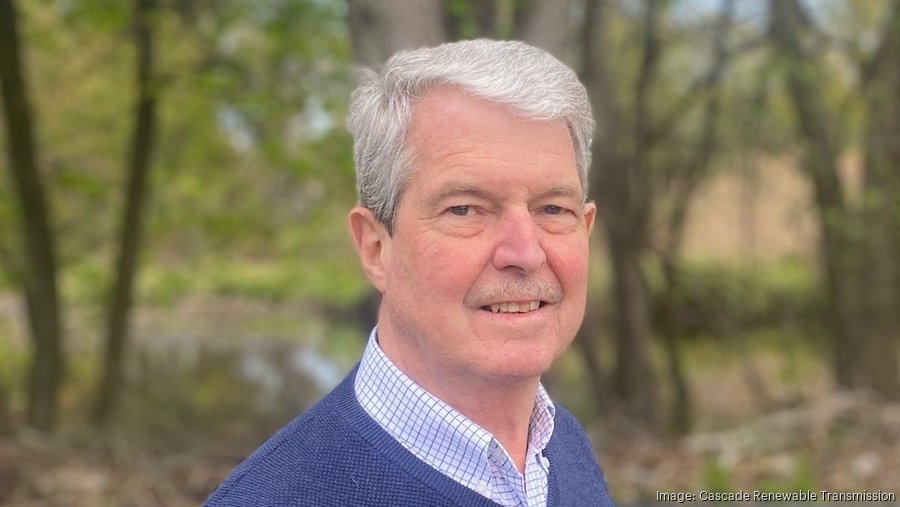Listen to this article 3 min
Randy Hardy had a question right at the top of a recent interview.
"How much more power is Intel going to need?" the Seattle-based energy consultant, who ran the Bonneville Power Administration for six years in the 1990s, asked.
He was referring to Intel's revelation that it intends to spend $36 billion to expand and modernize its facilities in Washington County, where it employs 23,000 people and, by its estimation, supports 100,000 jobs.
Hardy was eager to get a read on the chipmaker's power needs because, he said, "Portland General Electric already has an enormous problem serving load in that area."

That isn't quite how PGE (NYSE: POR) characterizes the situation, but the utility acknowledges it has a challenge on its hands on the west side of the Portland metro, where a stampede of data center projects and ongoing and anticipated semiconductor growth have turbocharged load expectations.
It's a new twist on a much-discussed, wider energy transmission challenge, one now pointed directly at an area counted on to boost the regional economy.
"What we've seen is now something on the order of about 2 gigawatts of requests that have come our way in the Hillsboro area," Larry Bekkedahl, the utility's senior vice president for advanced energy delivery, said. "So that's significant."
For context, PGE's highest-ever load — the most power it's ever had to deliver, on a blazing hot day last August — is around 4.5 gigawatts.
The utility and BPA, the biggest transmission player in the Pacific Northwest, are mobilizing to address the situation with a coordinated approach to serving the load, upgrades, and new power lines and substations. And an independent developer believes it can contribute with a bold proposal to lay a high-voltage cable under the Columbia River. But power lines are notoriously difficult to site — even a couple of relatively modest PGE projects now in the works have run into opposition.
Compounding the challenge: To meet decarbonization mandates that begin with an 80% reduction in emissions in 2030, PGE will need to dial down the natural gas plants that it has relied on heavily since shutting down its Boardman coal plant in 2020. That means onboarding a lot of new renewable energy onto a crowded grid.
"All the easy stuff has been done," Hardy said. "Now we're into the more expensive, more difficult stuff."
Intel's growing appetite for energy
So how much power is Intel (Nasdaq: INTC) going to need? That's a little fuzzy. The company's representatives declined to comment on current energy use and how that might change. Bekkedahl, in an interview, said PGE had Intel growth in its plans but the chipmaker "added something on the order of about (200 to 250) megawatts more than we anticipated by 2035."

In a follow-up email, though, PGE said Bekkedahl wasn't talking about Intel alone. Instead, he was referring to the "system-wide interest in additional load from the broader digital large-load customer class in the Hillsboro area."
In any case, there's no question that powering the west side of the metro is a big to-do item for PGE. Already, warehouse-style buildings filled with servers in the area have helped transform Oregon from a "secondary" data center market into the fifth-ranked "established" market in the country, according to a recent Cushman & Wakefield report. AI is expected to fuel the need for more.
PGE says the challenge is real, but it's on it.
"With the increased complexity and accelerated pace of growth, it is going to be a joint effort between customers with new large loads and utilities," Bekkedahl said via email. "We’ve already engaged in an accelerated learning process to understand the operational characteristics, ramp rates, and how best to serve the needs of these new large-load customers."
Part of the solution will "involve bridging strategies, such as load flexibility and onsite generation," Bekkedahl said. Most hours of the year, getting adequate power into any spot in PGE's territory isn't an issue. But utilities need to plan for peak demand, typically hot summer late afternoons now for PGE. Data center operators who can shift workload elsewhere in those hours, or turn to co-located batteries for a spell, would help.
Still, more and bigger pipes will be required.
The challenges of getting power to "North of Pearl"
The Hillsboro issue, a big aspect of it at least, is referred to in regional energy circles as "North of Pearl," a reference to a BPA substation in Wilsonville. Lots of power that increasingly needs to get to Hillsboro comes to Pearl from sources to the east and, increasingly, from the south, thanks to overflow solar power from California.
PGE first noted troubles getting power into Hillsboro from the south during the 2021 heat dome. "Subsequent summers have experienced this flow pattern with increasing intensity," it said in a recent local transmission planning report. The bottleneck had PGE on high alert during a mid-August heat wave last year.
The gathering storm prompted BPA to do a deep study of power flows on its lines in the area. Last November, the agency established North of Pearl as a "path," opening up new operations that allow it to move additional power up to Hillsboro.
Then in February, the agency identified a $125 million project to beef up a south-to-north transmission corridor into Hillsboro with 500-kilovolt lines, the ones that hang on giant steel-lattice towers. That PGE local transmission planning report also included four projects related to Hillsboro.
New transmission line proposals routinely meet with opposition. A line called Boardman to Hemingway largely in eastern Oregon is the classic example. First proposed in 2007, it's only now emerging from the permitting process and moving forward. But it was a new corridor, which PGE hopes to avoid in new expansions.
"We're going to rebuild (and) upgrade existing facilities and then if it has an easement that's alongside of it that was planned for a second line, we'll use that before we ever go to a brand new line that's crossing new lands," Bekkedahl said.
Still, even in a best-case scenario BPA doesn't see its North of Pearl projects energized until 2032 to 2036. And in what could be a sign of things to come, PGE has recently faced pushback for smaller, unrelated power-line projects that fit in the paradigm Bekkedahl has described, including one that uses existing right of way — but would cut through wooded land — in Forest Park.
A Columbia River energy solution?
The novel Cascade Renewable Transmission Project would actually benefit from those Forest Park-area upgrades but hopes to largely avoid conflict by going under the Columbia River for almost its entire route from The Dalles to Portland.
The premise for the line as conceived several years ago was to connect new renewable energy projects east of the Cascades to load in the Portland area. That remains a rationale, but the Hillsboro crunch has given the team behind it a new talking point.
While other projects intended to bring new renewables to the region would come in south of the city, Cascade Renewable would come into Portland at the north end, avoiding the North of Pearl peril.
"What (BPA and PGE) are proposing we consider to be part of the overall solution … but it doesn’t solve the south-to-north issue," the project lead, Chris Hocker, said. “We feel strongly that whereas we could see the need four years ago, the need has become so overwhelming that this goes beyond academic exercises."

The project has been formally in the permitting process for more than a year, giving it a head start on others that could help ease flows into Hillsboro. Optimistically, Hocker said, it could be under construction in 2026 and energized by 2029.
PGE's Bekkedahl said that though the project would lean on other planned upgrades, "it could be a piece of the puzzle." He noted that PGE provided a letter of support for federal infrastructure act funding that could help make it more cost-effective.
The cost is not small, at an estimated $1.5 billion.
While noting that hefty price tag, Hardy called it an excellent project. And while cost can't be dismissed, eyeing all the lines on the transmission drawing board, he added, "you're probably going to need all of them."
